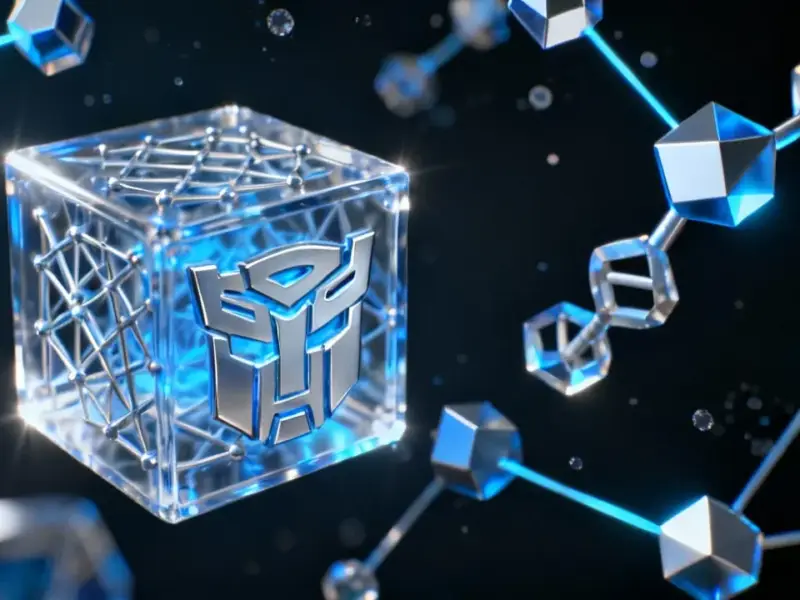According to TechSpot, Nvidia and Samsung have announced a partnership to build an “AI megafactory” featuring a cluster of 50,000 Nvidia GPUs designed to enhance chip manufacturing for mobile devices and robotics. The collaboration was confirmed by Nvidia’s senior vice president for Asia-Pacific Raymond Teh, who stated the company aims to support South Korea’s ambitious AI deployment plans. Following meetings between Nvidia CEO Jensen Huang and Samsung Chairman Lee Jae-yong, the partnership will see Nvidia adapt its designs to Samsung’s lithography platform, potentially providing a 20 percent performance uplift. This comes as Nvidia partners have already booked $500 billion worth of GPU orders for Blackwell and upcoming Rubin architectures, according to the original announcement. This strategic move represents a fundamental shift in how AI technology gets deployed beyond traditional data centers.
The Manufacturing Revolution Nobody Saw Coming
While most observers focus on Nvidia’s dominance in AI training and inference, this partnership reveals a more sophisticated strategy: using AI to manufacture the very chips that power AI. The 50,000 GPU cluster isn’t for running ChatGPT competitors—it’s for optimizing Samsung’s semiconductor fabrication processes. This creates a virtuous cycle where better chips enable better manufacturing, which in turn produces even better chips. Nvidia is essentially creating its own demand by improving the manufacturing capabilities of its partners, ensuring that future generations of AI hardware can be produced more efficiently and at lower costs.
Nvidia’s Business Model Evolution
This partnership represents Nvidia’s transition from pure hardware vendor to manufacturing ecosystem partner. By embedding its technology directly into Samsung’s production processes through Omniverse platform integration, Nvidia creates sticky, long-term revenue streams that extend far beyond GPU sales. The 20 percent performance uplift promise essentially makes Samsung’s manufacturing more competitive against TSMC, creating a powerful incentive for continued partnership. More importantly, it gives Nvidia leverage in future negotiations with all its manufacturing partners by demonstrating it can significantly improve their operational efficiency.
Why This Move Happens Now
The timing is strategically perfect for both companies. Samsung needs competitive advantages against TSMC’s manufacturing dominance, while Nvidia faces increasing pressure to diversify its manufacturing base beyond Taiwan. With geopolitical tensions and supply chain concerns, having a strong Korean manufacturing partner becomes crucial for Nvidia’s long-term stability. The $500 billion in pre-orders for Blackwell and Rubin architectures means Nvidia needs guaranteed manufacturing capacity that can scale rapidly—something Samsung can provide with Nvidia’s AI-enhanced optimization.
The Financial Implications
This partnership creates multiple revenue streams for Nvidia beyond the initial GPU sale. There’s the recurring revenue from Omniverse platform usage, potential performance-based incentives from manufacturing improvements, and the strategic value of having preferred access to Samsung’s advanced manufacturing capacity. For Samsung, the financial upside comes from winning more high-margin manufacturing contracts, not just from Nvidia but from other companies seeking AI-optimized chip production. This could fundamentally change how semiconductor manufacturing margins are calculated, with AI optimization becoming a premium service.
Shifting Competitive Dynamics
The Nvidia-Samsung alliance creates a formidable challenge to the traditional semiconductor manufacturing hierarchy. While TSMC remains the manufacturing leader, the combination of Samsung’s fabrication expertise with Nvidia’s AI optimization capabilities could rapidly close the gap. This also puts pressure on Intel’s foundry ambitions and AMD’s manufacturing partnerships. The real strategic insight here is that Nvidia isn’t just selling shovels in the AI gold rush—it’s now optimizing how the gold gets mined, refined, and turned into better shovels.




